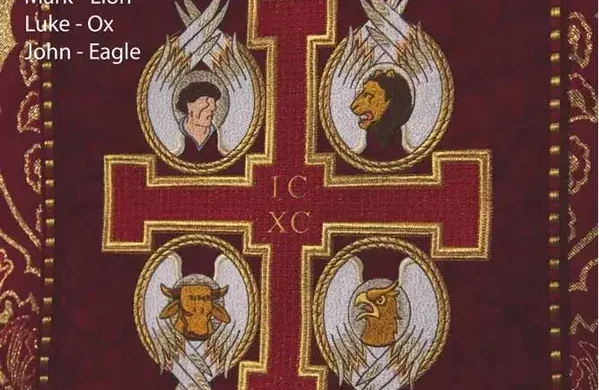
5 Ways Christians Can Battle Demons Through Scripture
The Bible doesn’t leave us guessing. Find out the 5 powerful ways to fight demons and why you’re already on the winning side.
Holy Week is a devotional with a penitential tone in the Christian liturgical calendar. It is a time for deep spiritual reflection, penance, and joyous celebration. This commemorative week marks the core of the Christian faith, as it recalls the events leading up to Jesus Christ’s crucifixion and resurrection.
The holy week starts with Palm Sunday, which signifies Jesus’ triumphant entry into Jerusalem. The following day, Maundy Thursday, commemorates the Last Supper, where Jesus shared bread and wine with his disciples, symbolizing his body and blood.
On Good Friday, Christians around the world remember Jesus’ crucifixion and death. It is a day of solemn reflection and mourning as believers recall the sacrifice that Jesus made for humanity.
Meanwhile, Holy Saturday is a day of reflection and waiting, as Christians prepare for the joyous celebration of Easter Sunday. It is a time for fasting and observing, as people reflect on the significance of Jesus’ death and resurrection.
Finally, Easter Sunday marks the end point of Holy Week. It is a day of celebration, as Christians around the world gather to celebrate Jesus’ resurrection. Easter Sunday is a time for joy and hope, as believers participate in the promise of eternal life that Jesus’ resurrection represents.
Therefore, Holy Week is a time for us Christians to reflect on the central part of our faith. It is a period of solemn reflection, penance, and joyous celebration. As believers around the world commemorate the events leading up to Jesus’ crucifixion and resurrection, may we find comfort and hope in the promise of eternal life that Easter Sunday represents.

The Bible doesn’t leave us guessing. Find out the 5 powerful ways to fight demons and why you’re already on the winning side.
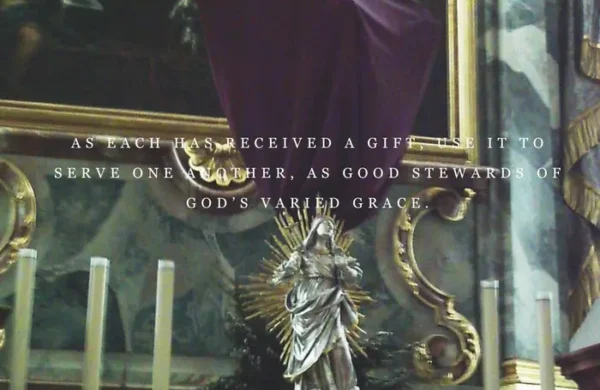
If you walk into church during the final weeks of Lent, you might be surprised. The crucifix is covered, the statues of the saints are hidden behind purple cloths, and even images of Jesus are veiled. The church feels quieter, plainer maybe even a little empty.
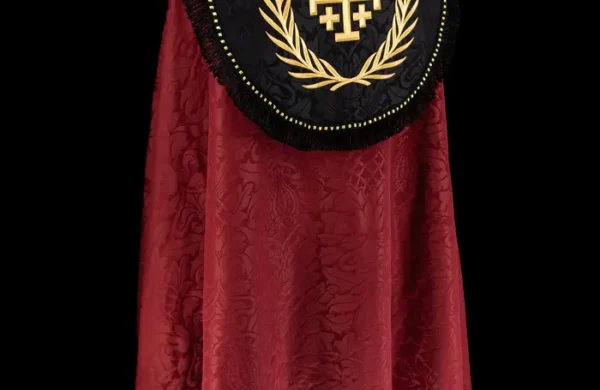
It looks like just another red but it is not. Oxblood has a hidden story few people know, rooted in centuries-old faith, sacrifice, and sacred tradition. What made monks choose this deep, somber shade for Holy Week? And why does it still matter today?
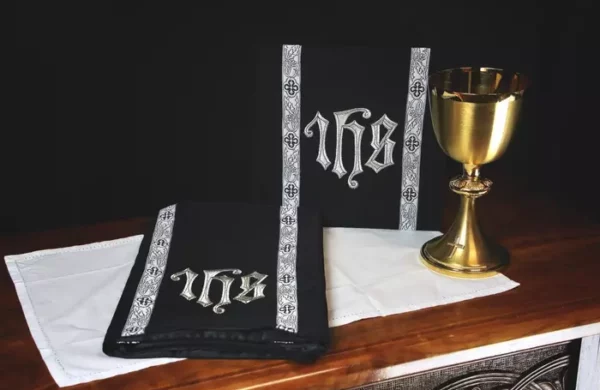
Black vestments symbolize life, death, and redemption in Christian tradition. Worn during solemn occasions like All Souls’ Day and Good Friday, they remind us of Christ’s sacrifice, our mortality, and the hope of resurrection. Rooted in history, black emphasizes humility and repentance, connecting us to centuries of faith and tradition.

The use of “Ox Blood” during Holy Week symbolizes Christ’s Passion, while a unique set, featuring a mother pelican motif, embodies sacrificial love and redemption. This collection blends tradition with personal significance, celebrating enduring faith themes.
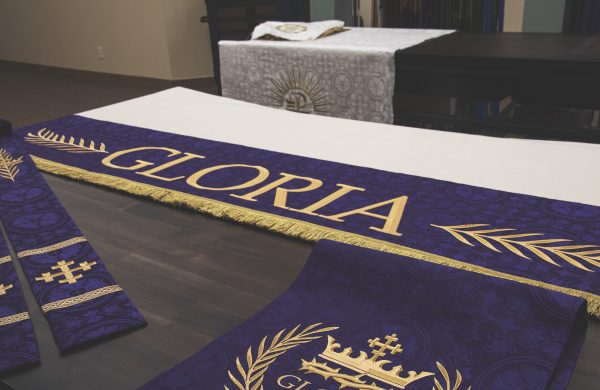
What are the symbols of Lent: Penitence to hope?
Ashes are probably one of the more recognizable symbols of Lent.
Churches that observe this, use purple vestments during Lent season.
Pretzels a Lenten treat that fits the dietary restrictions while reminding us to pray.
Fish on Friday and giving money during Lent.
What other symbols do you commonly see during this time of year in your church or in churches you have visited?
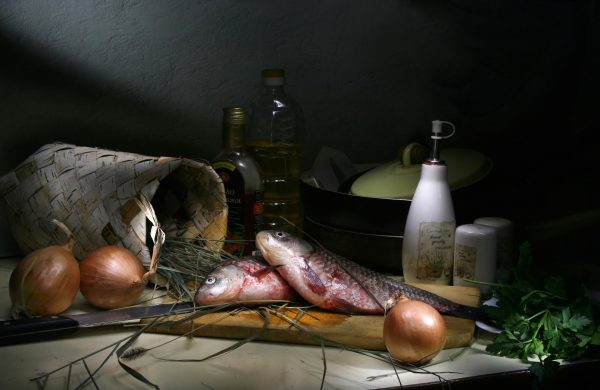
Fasting on Friday has been encouraged for a long time. But why Friday?
Eating fish on Friday is more or less a part of your upbringing.
Tradition tells us that this is the day when Jesus was crucified, and the idea is we’re giving up meat in remembrance of His sacrifice for us.
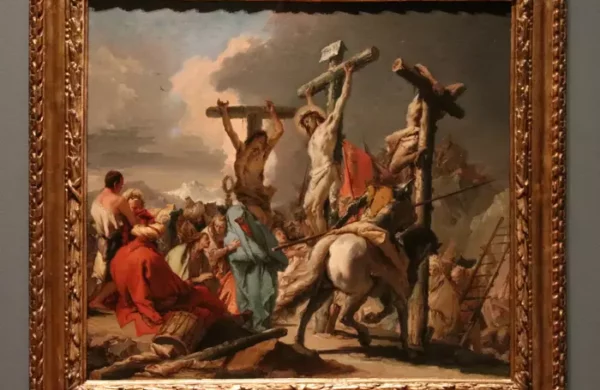
Good Friday Art: Private Collection by Carrie Roberts.
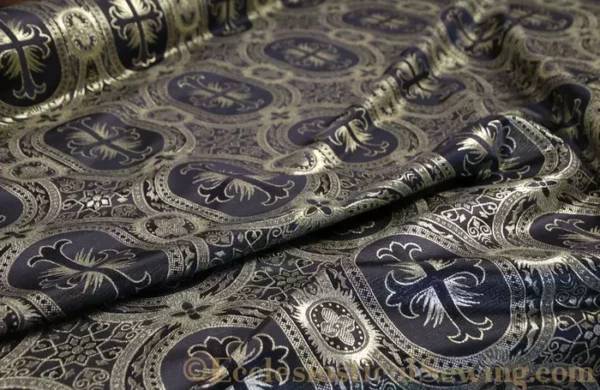
The Lenten Season is a time of year when black vestment fabrics are worn. The use of black will depend on which rites a church follows, but it is not uncommon to use black for Ash Wednesday as well as for Good Friday. This black brocade with a circle and cross motif has a nice weight and hand. It would work great if black hangings such as plain black banners were needed to drape in a church to create a somber mood for Good Friday. The fabric could also be used for any variety of church vestments and hangings.
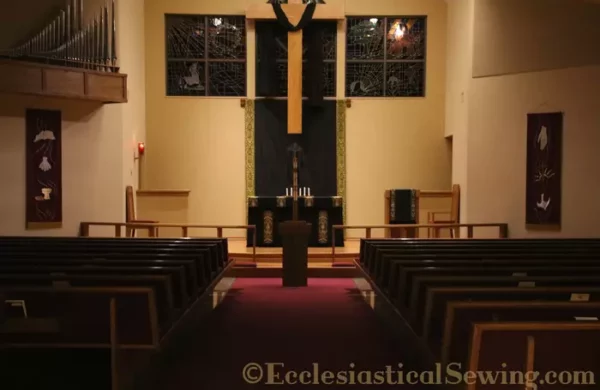
Good Friday in 2017 – church adhered to solemn customs, draping the altar in black with six candles, the seventh being the Paschal candle. While black is our choice, I found practices in other churches, employing red or violet. Despite the somber tone of Good Friday services, they set the stage for a joyous Easter celebration.

Many Christians today overlook historic Church traditions and vestments. Like Roman Catholic, Eastern Orthodox, Anglican, Lutheran, and Episcopalian have unique practices and materials for their vestments. Despite the beauty of these traditions, many Christians are unaware of them, similar to the limited recognition of events like Fat Tuesday. The appreciation for and celebration of these practices often involve a smaller group within the broader Christian community.
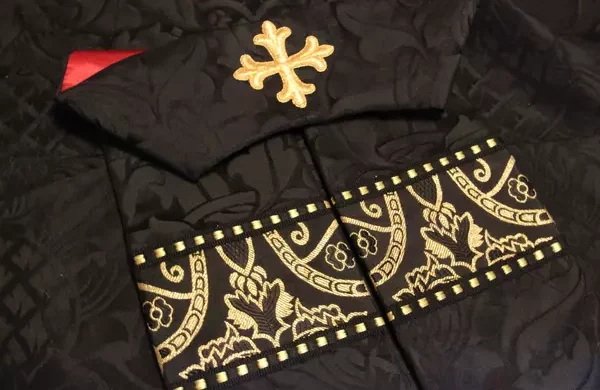
Ash Wednesday Altar Frontal and Chalice Veil Ecclesiastical Sewing Project.

The stitching on hand embroidery project is not overly difficult. This would make a great beginner’s project with a few modifications, such as using floss padding, and a single strand of embroidery floss for the laid stitching.
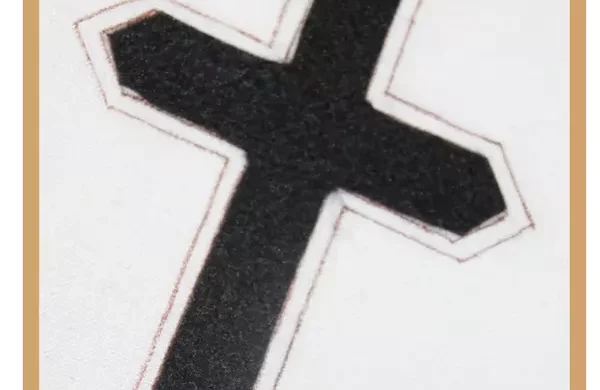
The Passion Cross has black felt padding, over which Au Ver A Soie, Soie Ovale is being stitched. A base of silk threads would be laid to create a padded surface, and then begin the stitching over thread padding.
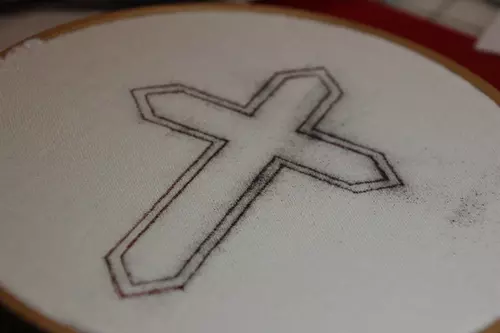
Creating Chalice Veil Cross in 20 minutes.
– The Design for the Chalice Veil Passion Cross is small. There was a tiny scrap of linen, washed and pressed, and with the right size, along with a piece of Kona Cotton to use as a backing. This was the perfect project for a small round hoop.
You must be logged in to post a comment.